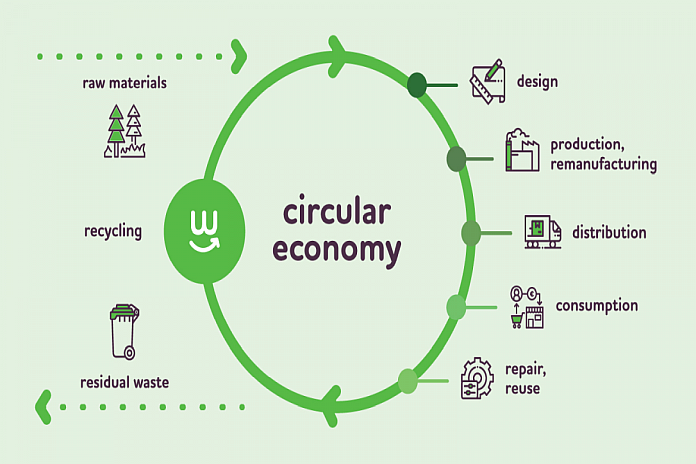Dear Sir
Our manufacturing sector is coming full circle and thinking differently about the environmental impact of materials within its industries. Looking for ways to change industries’ take-make-waste approach to a fuller circular economy, one where there is consideration of building materials beyond their end of life. Designing becomes like a biological process, with a more regenerative life cycle introducing natural, renewable products that have a more enduring sustainable design.
What’s a circular economy? Presently and in the past, design and manufacturing often discarded materials due to their age or condition. Within a circular economy model these items are revitalized, recycled and reused, and repurposed for similar or new uses, keeping them from the landfill. Integrating these items will save energy and less energy is used or lost through the process. Salvaging what was once thought to be garbage or waste.
What are the inputs and outputs of this economy? Well, let’s look at construction as a model example. Building a new or renovating an existing home, the manufacturers can give old items such as old trusses, barn boards and antique materials a renewed purpose through new designs and manufacturing processes; making products and assets last longer, be more durable and repairable. The full life cycle of items needs to be considered, giving these materials back to the supply chain for secondary or tertiary use.
If applied to built environmental sectors, this economy can cut waste, recapture the lost value of items, and realize new economic, social and environmental benefits. Manufacturers look for circular inputs with lower ecological impacts, such as renewable materials.
Within the millwork industry, wood, bamboo, hemp, straw, and other items are naturally renewable, as are most metals and some plastics. Renewing products allows us to replace outputs associated with more energy-intensive load-bearing materials.
Manufacturing facilities can better use their recourse and reduce their deliveries, decreasing overall vehicle emissions. Scraps can be repurposed or used as bio-energy.
If our economy and social fabric are to prosper and survive, new economic concepts and their practical methodology need to be devised. Considering the embodied energy represented by construction, manufacturing and demolition waste and the implications of continual materials disposal, new concepts of renewable, repurposed products make sense in moving towards a low-carbon future.
Steven Kaszab
Bradford, Ontario





